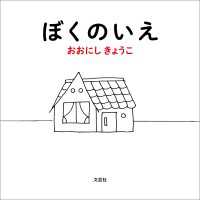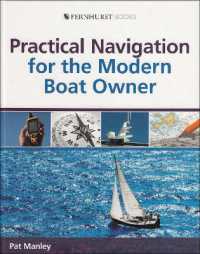Full Description
The first book to show how the concept of bodily organs emerged and how ancient tools influenced conceptualizations of human anatomy and its operations.
Medicine is itself a type of technology, involving therapeutic tools and substances, and so one can write the history of medicine as the application of different technologies to the human body. In Tools and the Organism, Colin Webster argues that, throughout antiquity, these tools were crucial to broader theoretical shifts. Notions changed about what type of object a body is, what substances constitute its essential nature, and how its parts interact. By following these changes and taking the question of technology into the heart of Greek and Roman medicine, Webster reveals how the body was first conceptualized as an "organism"—a functional object whose inner parts were tools, or organa, that each completed certain vital tasks. He also shows how different medical tools created different bodies.
Webster's approach provides both an overarching survey of the ways that technologies impacted notions of corporeality and corporeal behaviors and, at the same time, stays attentive to the specific material details of ancient tools and how they informed assumptions about somatic structures, substances, and inner processes. For example, by turning to developments in water-delivery technologies and pneumatic tools, we see how these changing material realities altered theories of the vascular system and respiration across Classical antiquity. Tools and the Organism makes the compelling case for why telling the history of ancient Greco-Roman medical theories, from the Hippocratics to Galen, should pay close attention to the question of technology.
Contents
Abbreviations
Notes on Translations, Names, Citations, and Editions
Introduction
0.1 Technologies and the Consolidation of the Body
0.2 Teleology, Mechanism, Vitalism, and Technology
0.3 Analogies, Metaphors, and Models
0.4 Chapter Overview
1: Hippocrates and Technological Interfaces
1.0 Introduction
1.1 Corporeal Composition without Organs
1.2 Regimen and the Body
1.3 Hippocrates's Nature of the Human
1.4 Medical Implements and Hippocrates's Morb. 4/Genit./Nat. Pue.
1.5 Female Corporeality and Gynecological Technologies
1.6 Conclusion
2: The Origins of the Organism
2.0 Introduction
2.1 Empedocles's Clepsydra and the Corporeal Interior
2.2 Physikoi on Corporeal Tools
2.3 Plato's Timaeus and Competing Technological Heuristics
2.4 Respiration, the Clepsydra, and Irrigation Pipes of the Fifth Century BCE
2.5 Irrigation and Water Distribution Technologies
2.6 Conclusion
3: Aristotle and the Emergence of the Organism
3.0 Introduction
3.1 The Soul and the Organism
3.2 The Tools of the Heart
3.3 The Journey of the Blood
3.4 Automata and Animal Motion
3.5 Conclusion
4: The Rise of the Organism in the Hellenistic Period
4.0 Introduction
4.1 The Rise of Anatomy
4.2 Herophilus of Chalcedon and Dissection Practices
4.3. Herophilus's Bellows
4.4 Erasistratus of Ceos and Pneumatic Pathologies
4.5 Conclusion
5: The Organism and Its Alternatives
5.0 Introduction
5.1 Post-Erasistratean Hellenistic Organa
5.2 The Empiricist Resistance
5.3 The Infrastructure of Roman Power
5.4 Asclepiades of Bithynia
5.5 Asclepiades and Aqueducts
5.6 Methodism and Pneumatism
5.7 Soranus and Female Corporeality in Methodism
5.8 Conclusion
6: Galen and the Technologies of the Vitalist Organism
6.0 Introduction
6.1 The Return of Anatomy
6.2 Galen of Pergamon and On the Function of the Parts
6.3 Technologies and the Natural Faculties
6.4 Vivisection and the Vitalist Body
6.5 Logical and Material Tools of the Lemmatized Body
6.6 The Material Technologies of Vitalism
6.7 Conclusion
Conclusion
Acknowledgments
Bibliography








